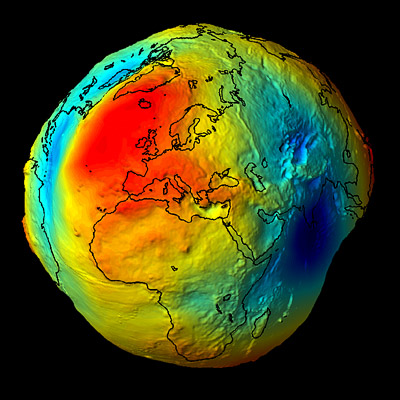High-Precision spectroscopy in In+/Yb+ Ion Crystals
Today's best optical clocks based on laser cooled ions reach fractional frequency inaccuracies of less than 10-17 [1],[2]. At that level of accuracy clocks can serve as quantum sensors to measure gravitational potentials with a height resolution in the cm range above the geoid, as well as to test fundamental theories like the predictions of Einstein's general relativity.
While neutral lattice clocks based on 104 laser cooled atoms profit from a high signal-to-noise-ratio and thus a low quantum projection noise, optical ion clocks profit from the highly accurate control of the single trapped ion. In our project we are investigating a new type of optical ion clock based on multiple laser-cooled ions which are trapped in chains and arrays and thus allow to significantly improve the stability of clocks. With such clocks relative frequency resolutions of 10-18 can be reached in 1/100th of the time than today's best ion clocks.
We developed a segmented and integrated, scalable trap structure, that allows trapping of multiple ions with a high level of control of the ion dynamics hence making ion crystals accessible for time and frequency metrology [3].
Indium ions show excellent properties for an optical atomic clock [4] and can directly be detected via the intercombination line to the 3P1 state. Yb+ ions on the other hand are used as a versatile tool to sympathetically cool larger crystals of In+ ions, but as well have interesting properties by themselves for fundamental tests of our standard model [5].
Our system is able to achieve relative systematic frequency uncertainties at the 10−19 level using separate strings with ca. 10 clock ions [8]. Confining and interrogating several such chains our system can support on the order of 100 clock ions at this level of accuracy, thus pioneering multi-ion clock operation with a smaller fundamental limit to statistical uncertainty than state-of-the-art single ion clocks [9].
The most important results can be found here.
References
[1] Huntemann et al., Phys. Rev. Lett. 116, 063001 (2016)
[2] Chou et al., Phys. Rev. Lett. 116, 063001 (2010)
[3] arXiv:1712.02335v2 [physics.atom-ph]
[4] Herschbach et al., Appl. Phys. B 107, 891 (2012)
[5] Dzuba et al., Nature Phys. (2016), doi:10.1038/nphys3610
[6] Pyka et al., Appl. Phys. B 114, 231 (2014)
[7] Nordmann et al., arXiv:2302.02489 (2023)
[8] Keller et al., Phys. Rev. A 99, 013405 (2019)
[9] arXiv:1803.08248v1 [physics.atom-ph]





